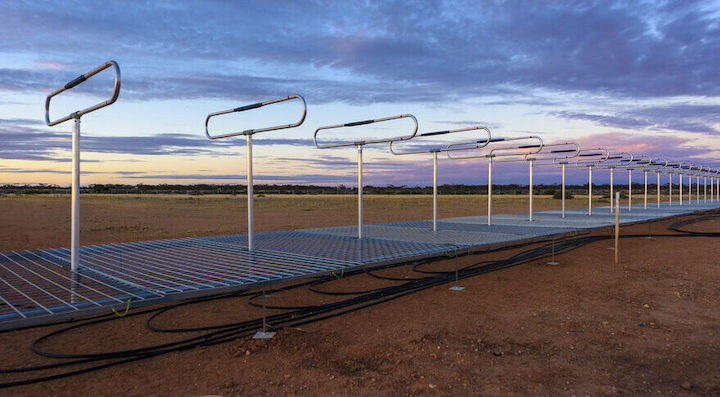11.12.2021

SAN FRANCISCO – South Australia’s Oculus Observatory, which opened Dec. 9, houses the first in a planned global network of passive radars to track objects in orbit.
Located near the River Murray Dark Sky Reserve, the Oculus Observatory is designed to host multiple, complementary space surveillance sensors, said James Palmer CEO of Silentium Defence, the firm that designed, built and manages the Oculus Observatory.
“Unlike traditional space surveillance technologies that provide a narrow view of debris and objects in orbit, the sensors at our observatory provide coverage of an area the size of South Australia,” Palmer said in a statement. “For customers, this means we will detect and track objects they expect to see, like satellites and catalogued debris, as well as new and unknown objects that may pose a threat to critical services or assets in space.”
The Australian Government provided nearly 1.5 million Australian dollars ($1.07 million) for the Oculus Observatory through its International Space Investment Initiative, which backs projects designed to strengthen relationships with international space agencies.
The Oculus Observatory’s first sensor is Silentium Defence’s Maverick S-series passive radar. Instead of transmitting electromagnetic waves, the Maverick S-series relies on power from terrestrial FM radio transmitters and energy reflected from space objects to identify their location.
“To the best of our knowledge, we are the only commercial providers of passive radar for space situational awareness,” Palmer told SpaceNews. “We can provide that same type of information as the active radar would. We’re talking about the angular information as well as range and velocity. We use that information to be able to derive the orbital elements of resident space objects.”
Silentium Defence intends to establish a distributed network with dozens of passive sensors to pinpoint objects in orbit. This type of network could be built and commissioned rapidly, Palmer said, because passive sensors to not require spectrum licenses.
Meanwhile, Silentium Defence is working to attract complementary sensors to the Oculus Observatory.
“What we’re doing with the Maverick S-series is catalog update, persistent detection and tracking of objects in low Earth orbit,” Palmer said. “But we also recognize that there are complementary sensors that can provide other space situational awareness information.”
Space situational awareness is more important than ever, Palmer said, “because we are seeing a massive increase in the number of objects that are going up into orbit.”
To prevent collisions, “we have to have the most up-to-date information about what the objects are doing in order to support people to make decisions about how we can avoid collisions in the future,” Palmer added.
Quelle: SN
